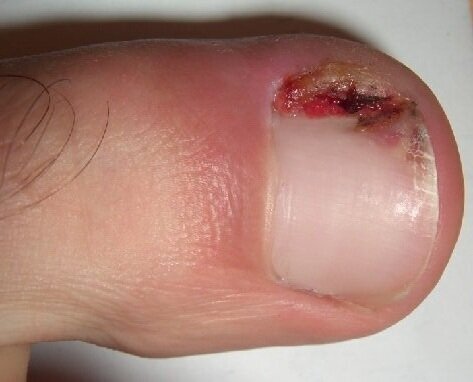Nail Surgery
Nail pain? We can help.
With a combined experience of over a thousand procedures under our belts, if you have a nail problem requiring surgery, you're in good hands. Anyone who has suffered an ingrown toenail can tell you what an extreme pain it can be. When conservative care is only fixing the problem for a short period or when you are experiencing recurring infections, nail surgery represents a safe and effective cure. And after quick anaesthetic, it can be performed painlessly by our caring, expert team in no time at all.
Expert care and permanent cure.
Ingrown toenails are both exceptionally common and exceptionally painful at times. Sometimes we will offer conservative care by way of gently cutting away and filing down the offending nail edge, especially in minor cases and where it has not been a repeat offender and deserves the benefit of the doubt. However, if the issue keeps recurring, is leading to infections or has produced large amounts of swelling, it is likely this will not resolve without surgery. Whilst this can sound distressing to many, it is actually a very straightforward procedure and has one very important upside - it's a cure!
Straightforward and effective solutions.
Our first job is to ensure you are medically fit for nail surgery - the vast majority of people are with the occasional need for extra care during the post-operative healing phase if you have a condition which may affect this (such as diabetes or circulation issues). Once this is done and you have been through the consent process, we can begin. The procedure begins with a local anaesthetic at each side of the affected toe to ensure it is numb and therefore pain-free during the surgical process. A small tourniquet is then applied over the toe so there is little to no bleeding. The next step will then depend on which type of surgery we have agreed is best for you. This may simply mean removing a portion of overgrown skin overlapping the nail or, more often than not, will involve removal of either part or all of the offending nail with specialist tools (baring in mind you won't feel it!). The nail bed is then treated with an agent called phenol which destroys the portion of the nail bed we are concerned with, ensuring the problem nail does not grow back. The tourniquet is then removed and a dressing is applied to be kept on until we see you a few days later to check up on things. At this point we supply you with your own pack of dressings and guide you through the process of redressing the toe at home. Healing varies from person to person depending on factors like your age, overall health, any unforeseen trauma or infection to the toe after the procedure but is usually between 4-6 weeks. Other than your dressings, you are not particularly limited in your daily activity and can walk out of the clinic immediately after the procedure.
Guide Prices
£295 (one toe) to £395 (2 toes).



